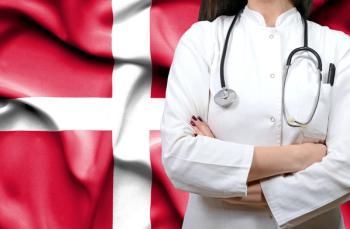
It's prime time to increase efficiency through operations
The medical practice of the future may resemble the Santa Monica, California, multispecialty practice Oceanside Wellness Center, depicted on the show "Private Practice," according to one business consultant.
Key Points
The medical practice of the future, says Christopher Mahan, CHBC, MBA, ACC, of Mahan and Associates, LLC, Nashville, Tennessee, may resemble the Santa Monica, California, multispecialty practice Oceanside Wellness Center depicted on the current television show "Private Practice."
"It's a pretty slick office," he says. "They have neonatal surgery, obstetrics and gynecology, infectious disease, alternative medicine, fertility, pediatrics, urology, psychiatry, internal medicine, and cardiology all under one roof, all in one awesome, dynamic office."
The multispecialty practice is not a new concept, Mahan says. Models including management services organizations, group practices without walls, affiliated medical practice corporations, and medical homes have sprung from similar thinking.
Some of these models have failed in the past in part because of their inherent complexity, he says, but technologies such as electronic health record (EHR) systems and practice management software now are able to facilitate such arrangements, improving practice efficiency and communication with patients. In addition, government incentives may mean widespread adoption of EHRs, helping to transform patient expectations into the new reality.
"You can do so many things with the software that's out there," Mahan says. Patient lab test results can be delivered quickly, electronically, to a practice. Practice managers can customize encounter forms. Queries can be performed to identify all patients who have a specific condition and then secure, encrypted email messages can be sent to those patients about treatment plans, test results, and other information specific to that condition. And technology such as the Web, social networking tools, and smartphones also can help a practice communicate with patients via Web portals, patient newsletters, and other vehicles.
That's an important consideration, he says, because patients place a premium on their time and value efficiency and organization. Use of such technology can improve clinical care and the overall patient experience, serving as "an incredible marketing tool as patients tell their friends about their experience with your practice," Mahan says.
"You don't only have to grab market penetration; you also must minimize your attrition. You want to keep patients coming to you and maintaining that you are Oceanside Wellness Center," he adds.
Technology can enhance practice efficiency as well as patient satisfaction in part because it enables practices to deliver some information to patients relatively quickly and increase contact with patients while reducing the need for office visits, Mahan says. "A lot of care can be delivered without resource-intensive office visits."
And although the fictional California-based practice apparently outsources billing and administrative tasks, he says, the newer technology platforms and cross-functional software utilities not only improve the patient experience and quality of care but also create cost-saving opportunities within a practice, Mahan says.
Newsletter
Stay informed and empowered with Medical Economics enewsletter, delivering expert insights, financial strategies, practice management tips and technology trends — tailored for today’s physicians.
















